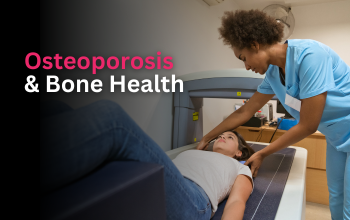The Arthritis Newsletter
Fall 2012Introduction
Written by: Gordon Whitehead
 Fall. For most of us it brings back memories of kicking fallen leaves as we walk on our way to a fresh year of school. Suddenly, the languid days of summer are over and the serious part of the year begins.
Fall. For most of us it brings back memories of kicking fallen leaves as we walk on our way to a fresh year of school. Suddenly, the languid days of summer are over and the serious part of the year begins.
For people with arthritis it is also a time when most of us feel a need to get serious with, and about our disease. As the warmth of summer departs, much of the natural ease that the sun imparts to aching joints departs with it. And gone too, are some of the summer activities that go naturally with that season and that serve to keep us fit and to maintain our joint-supporting musculature—things like swimming, gardening, boating, and outdoor sports of various kinds. In the fall, we have to be more consciously aware of what we will do to stay fit. What form of exercise should we do and where shall we undertake it?
I think it is safe to observe that everyone with arthritis has a rather complex inner dialogue with themselves about exercise. On the one hand, we know that it is not only good for us (as it is for everyone) but so very often it just plain hurts us to exercise. And the advice we get from caregivers can seem contradictory—we’re often told not to add stress to sore or inflamed joints with too much activity, but at the same time, we discover that if we coddle aching joints excessively, surrounding muscles can quickly atrophy and sluggishness and inactivity adds additional stress to the same problem joints. As well, the slowing down of our metabolic rates as we age and tend to become more sedentary, often leads to unhealthy weight gains, with predictably adverse effects on most types of arthritis and related co-morbidities —particularly those of a cardiovascular nature.
So what do we do? In this issue, Sheila Kerr talks about her “creaky knees” and how she deals with them. Sheila’s regimen is focussed on containing and mitigating the effects of osteoarthritis (by far the most common species of arthritis disease) but her approach to the care of her joints, the exercise she describes, and her approach to the protection of her joints is pertinent to almost every type of arthritis. In my own case, I have found that swimming has been a godsend as an exercise for my RA, over the many years I’ve had the disease, because moving about in warm water not eases joint movement, but it helps to maintain a decent range of motion and does so with the buoyancy of water helping to alleviate stress on the joints. Nadia Prestley, in a charming essay about her mother titled “La Passeggiata”, describes another way of exercising and staying active — walking — but this is walking in a special and unique social context common to many parts of Mediterranean Europe where the whole person is engaged in an activity that takes place within a unique community setting.
In the end, the message seems to be this—find a form of exercise that works for you, that allows you to attain your fitness goals within a framework of activity that is natural to you and that can be readily accommodated into your ongoing lifestyle. If necessary, seek counsel from your peers on the best types of exercise to undertake and don’t hesitate to consult a professional trainer or a physiotherapist if you don’t feel confident about selecting an exercise regimen that gives you needed benefits for your arthritis but avoids adding unwelcome stress to your joints. Think about it, when you start kicking those autumn leaves as you go walking this fall!!





















































